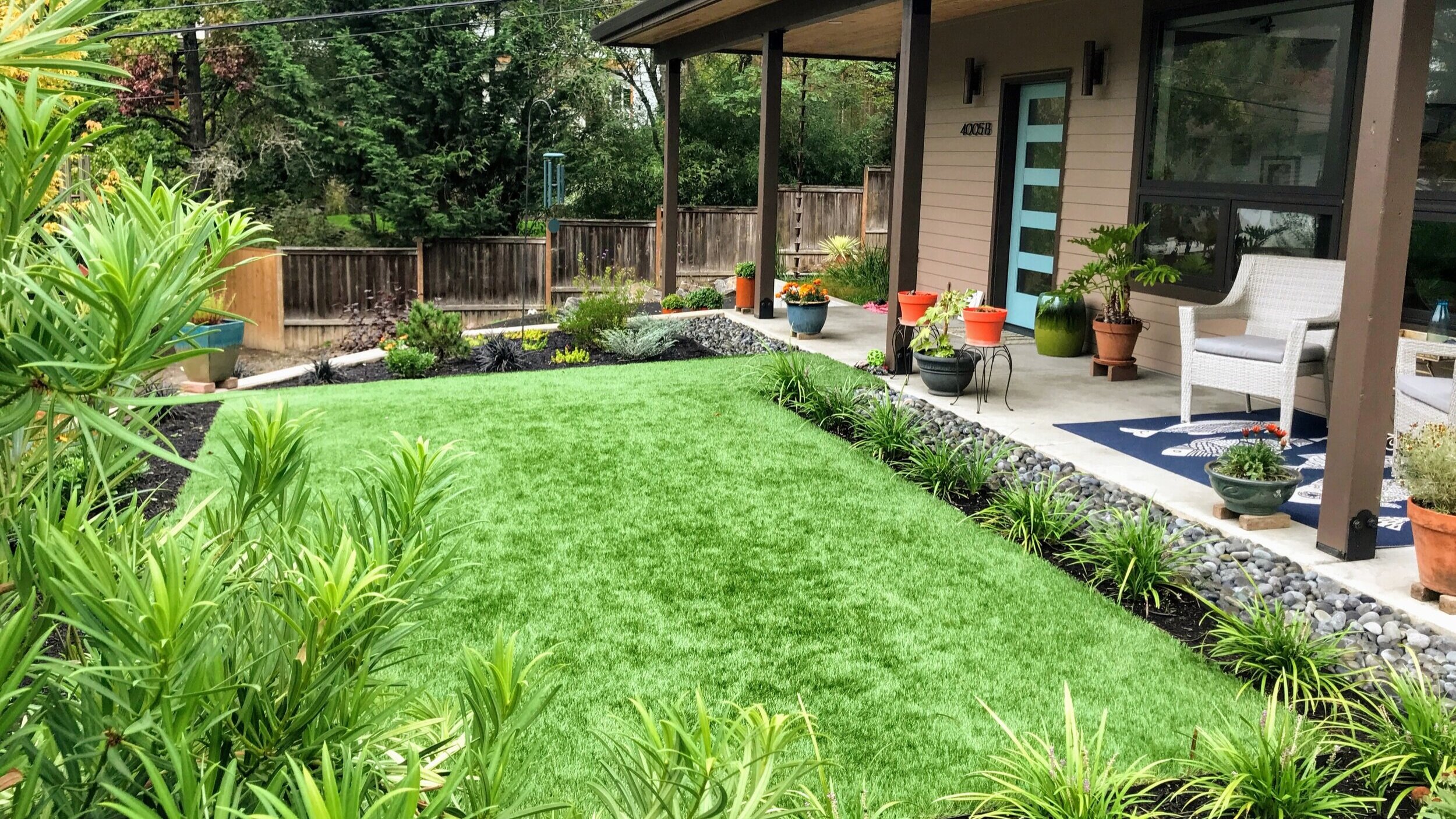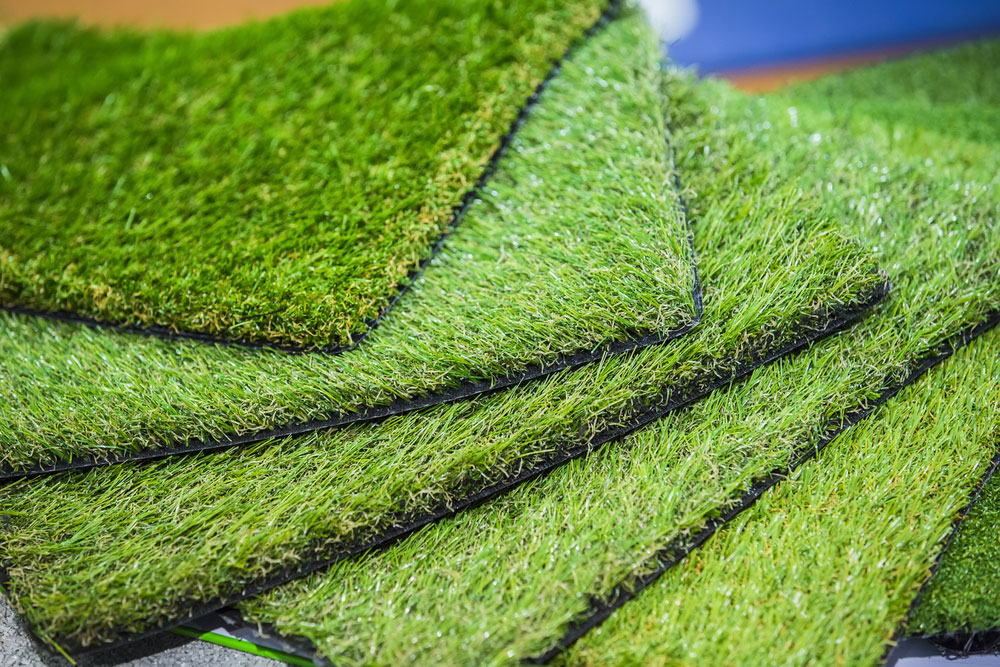Expert Arizona Turf Installation Solutions for Residential and Commercial Use
Expert Arizona Turf Installation Solutions for Residential and Commercial Use
Blog Article
Explore the Environmental Benefits of Opting for Synthetic Grass Solutions
The adoption of fabricated grass services offers an engaging chance to deal with pushing ecological obstacles. By significantly decreasing water use and reducing the application of hazardous chemicals, these choices not only promote lasting landscaping yet also protect regional environments. In addition, the reduced carbon footprint related to lowered upkeep tasks contributes to an extra sustainable approach to land monitoring. The implications of these advantages expand beyond simple conservation initiatives, elevating questions regarding their long-term effect on environment preservation and overall eco-friendly balance. Discovering these dimensions reveals a complicated interaction worth thinking about.
Water Conservation Advantages
One of one of the most considerable advantages of synthetic grass is its capability to preserve water. Traditional grass yards require considerable irrigation, especially in areas susceptible to drought or water restrictions. On the other hand, fabricated turf does not need watering, considerably decreasing the overall demand for water sources. This function is particularly useful in deserts where water shortage is a pushing issue.
By eliminating the demand for normal watering, synthetic grass contributes to lasting landscape methods and helps minimize the environmental impact of extreme water intake. The preservation of water extends to the decrease of runoff, which can lead to dirt disintegration and river air pollution.
Furthermore, the setup of man-made lawn permits districts and home owners to designate water resources extra effectively, concentrating on necessary usages such as alcohol consumption water and agriculture. The shift in the direction of synthetic grass not only advertises responsible water use however also lines up with more comprehensive ecological objectives targeted at maintaining natural deposits.
As neighborhoods significantly focus on sustainability, the water conservation advantages of artificial lawn provide a compelling instance for its adoption in industrial and domestic landscaping tasks.
Decreased Chemical Usage
The shift to synthetic grass significantly lowers the dependence on chemical therapies generally made use of in natural grass upkeep. Traditional lawn administration normally includes the application of pesticides, fertilizers, and herbicides to advertise growth and control pests. These chemicals can position dangers to human health and wellness, regional wild animals, and the atmosphere, adding to dirt and water contamination.
On the other hand, synthetic grass gets rid of the need for these harmful substances. Once mounted, it needs marginal maintenance, mostly consisting of routine cleaning and infrequent infill replenishment. This decrease in chemical usage not only benefits the immediate setting however additionally adds to wider environmental stability. By minimizing the launch of synthetic compounds right into the environment, synthetic grass promotes much healthier dirt and water systems.
Moreover, the lack of chemical drainage associated with artificial lawn installations helps safeguard neighborhood waterways from contamination, sustaining marine life and preserving biodiversity. Phoenix turf companies. As areas increasingly prioritize lasting practices, selecting synthetic grass provides a feasible solution that straightens with ecological preservation objectives. Via this change, homeowner can enjoy rich eco-friendly rooms without compromising ecological wellness, leading the way for a much more sustainable future
Reduced Carbon Footprint

In addition, the installation of synthetic grass can result in significant water preservation. Natural lawns require significant amounts of water for irrigation, which not just includes in the carbon impact related to water removal and treatment but likewise stress neighborhood water sources. On the other hand, synthetic grass needs minimal upkeep, needing no watering, thus significantly minimizing water usage and its associated power prices.
Additionally, the durability of man-made lawn adds to its reduced carbon impact. With a life-span of up to 15 years or even more, the need for constant substitutes is lessened, resulting in much less waste and reduced energy intake in production and dealing with conventional grass alternatives. Generally, man-made grass presents a lasting option for ecologically mindful landscaping.
Environment Preservation
Habitat preservation is a critical factor to consider in the dispute over landscape design selections, especially when comparing artificial lawn to natural yard. All-natural turf yards usually need substantial maintenance, consisting of the use of plant foods, chemicals, and herbicides, which can adversely affect regional communities. These chemicals can seep into the dirt and rivers, harming indigenous flora and animals and disrupting neighborhood environments.
On the other hand, man-made lawn offers a possibility to reduce the eco-friendly impact of landscape design. By opting for artificial turf, home owners can reduce the disruption of all-natural environments connected with typical lawn treatment practices. Artificial lawn removes the need for harmful chemicals, thus securing close-by wildlife and keeping the integrity of surrounding ecological communities. Additionally, the setup of synthetic turf can cause like this the conversion of former yard locations into even more biodiverse landscapes, such as pollinator gardens or indigenous plant areas, which can support neighborhood wildlife.
Inevitably, the transition to synthetic grass not only saves water and reduces maintenance initiatives but also cultivates an extra harmonious partnership between human tasks and the natural surroundings, promoting habitat conservation in the procedure.
Long-Term Sustainability
Lasting sustainability is a crucial consider assessing the advantages of artificial grass over conventional turf lawns. One of one of the most significant benefits of synthetic grass is its longevity; it can last approximately 15-20 years with marginal maintenance, whereas natural grass calls for regular reseeding and substitute. This longevity decreases the requirement for constant sources, such as water, plant foods, and chemicals, which are essential for preserving a healthy and balanced grass lawn.
Furthermore, synthetic grass adds to a decrease in carbon discharges connected with lawn treatment equipment. Typical lawns typically need gas-powered mowers, trimmers, and blowers, all of which add to air Source contamination. Arizona turf. In contrast, synthetic grass gets rid of the requirement for such tools, advertising a cleaner environment
In addition, the production of man-made lawn significantly uses recycled products, improving its sustainability account. As producers embrace eco-friendly methods, the environmental impact of synthetic check this grass proceeds to decrease.

Conclusion
The adoption of synthetic grass options presents substantial ecological benefits, including significant water preservation, lowered dependence on damaging chemicals, and a reduced carbon impact. Man-made lawn help in maintaining all-natural environments by decreasing land disturbance and promoting long-term sustainability with the use of sturdy products. Collectively, these factors underscore the capacity of synthetic grass to contribute favorably to ecological health and wellness and use a practical choice to standard landscaping methods in a significantly resource-conscious globe.
In contrast, artificial grass does not require watering, dramatically lowering the overall need for water resources. By reducing the release of synthetic compounds right into the ecosystem, synthetic grass promotes much healthier dirt and water systems.
Furthermore, the installment of fabricated grass can result in significant water preservation. In contrast, man-made turf requires very little maintenance, needing no watering, therefore considerably lowering water usage and its associated energy expenses.

Report this page